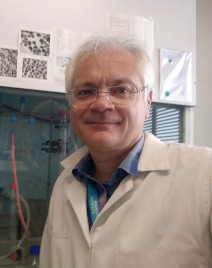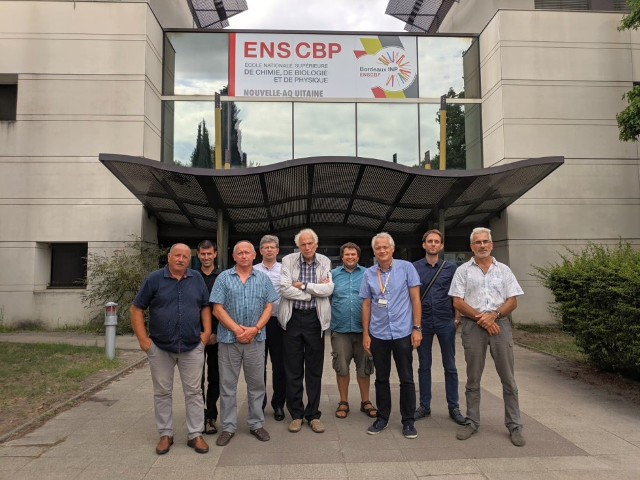
Olivier Sandre
Senior researcher
Description: The goal of the FMF consortium was to create structures that can be manipulated with applied magnetic fields and to formulate mathematical models to predict their behavior in magnetic fields of different configurations. Different structures of interest of string-like flexible magnetic filaments (FMF) were synthesized and studied. To develop deeper understanding of these micro-devices, new numerical algorithms were developed in close collaboration with parallel experimental investigations for wide variety of particular applications. One of these systems consists in magnetosomes, which are natural magnetic chains present in magnetotactic bacteria. Here it is possible to use a biomimetic approach and look at how different micro-organisms maximize the necessary properties at a given energy consumption. Following a biomimetic approach, the task of the LCPO team was to prepare magnetic filaments from iron oxide nanoparticles co-assembled with charged copolymers (polyelectrolytes) at a controlled salinity (through a dialysis process under a static magnetic field), as shown on the electron micrograph on the left. Description of the behavior of these three systems once internalized in biological cells will include the consideration of the “cytoskeleton” surrounding the strings that also tunes their dynamic response. In addition to those purely scientific outputs, the project is being valorized by technological development with a regional SME, Cordouan Technologies, by developing a new product in the field of scientific instrumentation. Unlike most dynamic light scattering (DLS) setups restricted to the study of isotropic colloids, we developed and patented in Europe and worldwide a multi-angle polarized DLS setup that is able to characterize anisotropic e.g. elongated particles, by measuring both translational and rotational diffusion constant and hence of the aspect ratio of the objects. This device was tested and qualify on different model systems (rigid gold nanorods or flexible polymer filaments) and led in Fall 2021 to the release of a commercial product named "Thetis".
Funding: M-ERA.NET Joint Call 2017 (project 5131)
Partners: Laboratory of Magnetic Soft Materials (MMML) at the University of Riga (Latvia), Institute of Experimental Physics of the Slovak Academy of Sciences in Kosice (Slovakia), Cordouan Technologies (Pessac)
 Picture in front of the ENSCBP building of all participants of the 2nd FMF project meeting on August 28th-29th 2019 at LCPO and Cordouan Technologies, Pessac, France
Picture in front of the ENSCBP building of all participants of the 2nd FMF project meeting on August 28th-29th 2019 at LCPO and Cordouan Technologies, Pessac, France